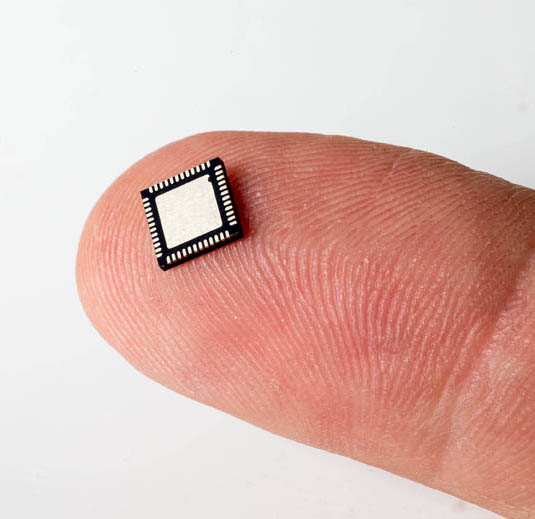Location has become a central facet of mobile applications. Many applications that are not related to mapping or navigation are using location to enhance the service they deliver. But, location awareness has, until recently, not been easy for electronic devices. GPS chips only work outdoors and location positioning indoors, using Bluetooth or Wi-Fi, are hard to implement and are usually not accurate enough to be useful. But now Ultra-Wideband (UWB) radio, operating at 3.5 to 10.0 GHz, is enabling highly-accurate location awareness in electronic devices.
Today’s location technology in smartphones can only determine their position indoors, where GPS is not available, to an accuracy of two to five meters, and often as much as eight meters. The reason it is not more accurate is they estimate location by measuring the signal strength of Wi-Fi or Bluetooth signals between a smartphone and a stationary unit. In theory, signal strength is a good indicator of how close a device is to the radio unit, since going farther away causes a weaker signal. In practice, however, it’s very hard to know whether a weak signal is caused by being farther away from the radio unit, or by a shelf or wall between the phone and the radio unit, causing interference in the radio signals.
The UWB radio has now come to market, ushering in big changes in wireless location tracking with accuracy of 10 cm (3.94 inches). UWB radio is designed from the ground up to be better than Wi-Fi or Bluetooth at measuring distance and location. Instead of using signal strength to estimate distance, UWB systems measure how much time it takes for a given radio wave to travel between a mobile device and a stationary radio unit, giving much more accurate results. UWB also measures location much more quickly, without the delays found in Wi-Fi- or Bluetooth-based systems.

Fig. 1: The DW1000 UWB transceiver IC comes in a 6 x 6 mm QFN48 package.
And, UWB technology is available in a single chip, enabling easy integration into devices. Makers of electronic products can integrate this chip, or an even easier to integrate module, into their products to enable them to determine their location indoors with very high accuracy. This chip is also low power, especially due to fast data rates and quick cycling to standby.
Electronics manufacturers are working now to integrate UWB location measurement into a wide variety of products. This includes asset-tracking systems for hospitals, factories and warehouses, drones that know precisely how far away the other drones are, camera tripods that point a camera at precisely where athletes are as they move around a field; home and industrial robots, and much more.
UWB is also used to augment common consumer applications. Examples currently in development include a tour-guide application that knows precisely which museum exhibit a person is looking at, a secure payment application that allows a device to make a payment only when it is within a meter of the cashier, a retail application that delivers coupons for a discount on pasta sauce to customers standing right in front of the pasta, and many others. UWB’s highly-precise location positioning enables these applications to deliver a level of service not possible using today’s smartphone technologies.
One example of a UWB transceiver is the DW1000 IC from Decawave. Compliant with IEEE 802.15.4 and measuring just 6 x 6mm, the transceiver enables the location of objects in real time to a precision of 10 cm indoors and offers data rates up to 6.8 Mbits/s. It has a communications range of up to 300 m line-of-sight, thanks to coherent receiver techniques. The chip uses an SPI interface, works over -40° to 85°C. A module – DWM1000 – including an antenna, power management, and clock control is also available, which further reduces required design effort.
Advertisement
Learn more about Decawave





